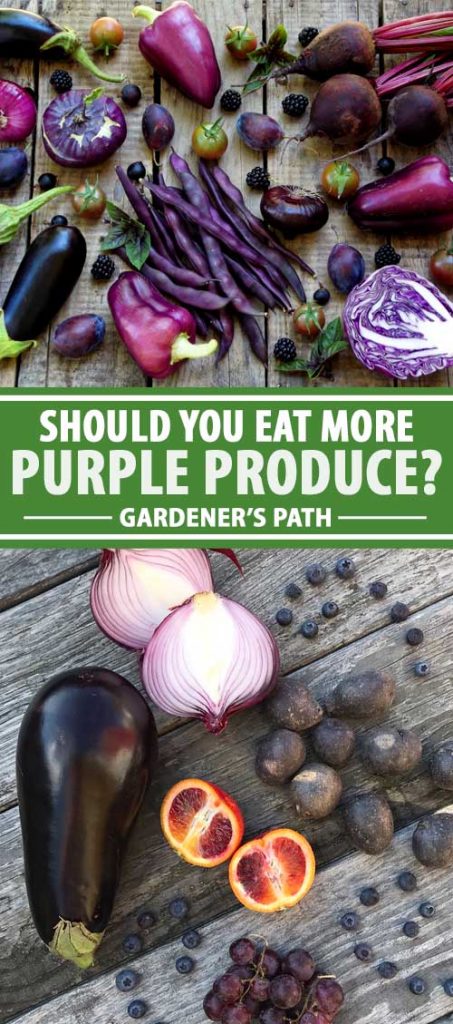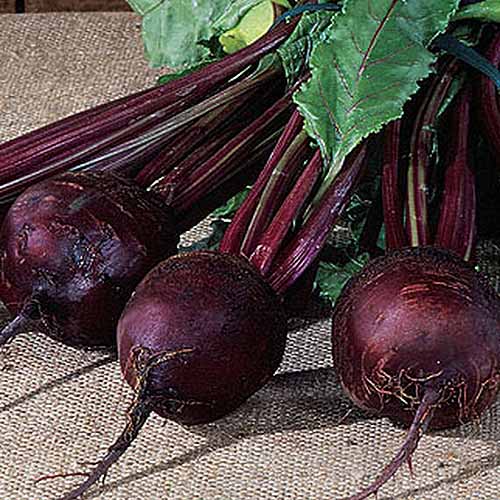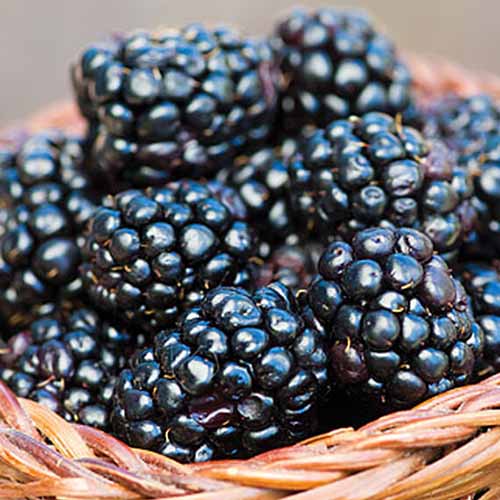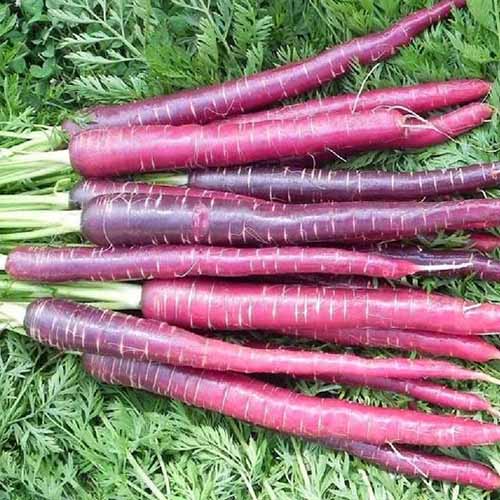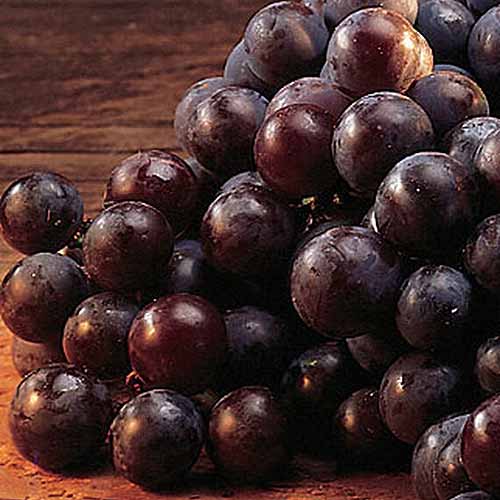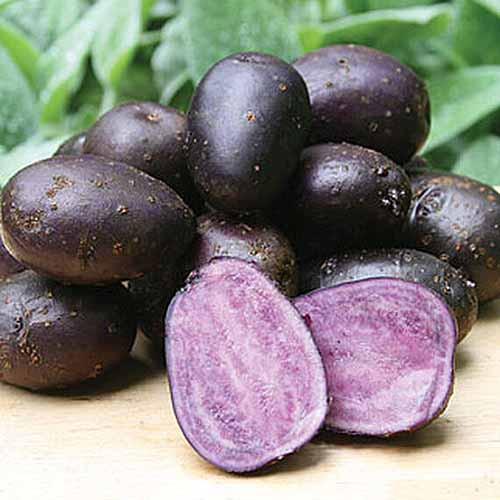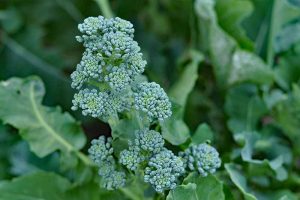Purple has long been regarded as the color of royalty. It’s rich and prodigious.
This translates to the food world, with blueberries and acai being labeled as “superfoods” and an increasing amount of plants being bioengineered to have this special hue.
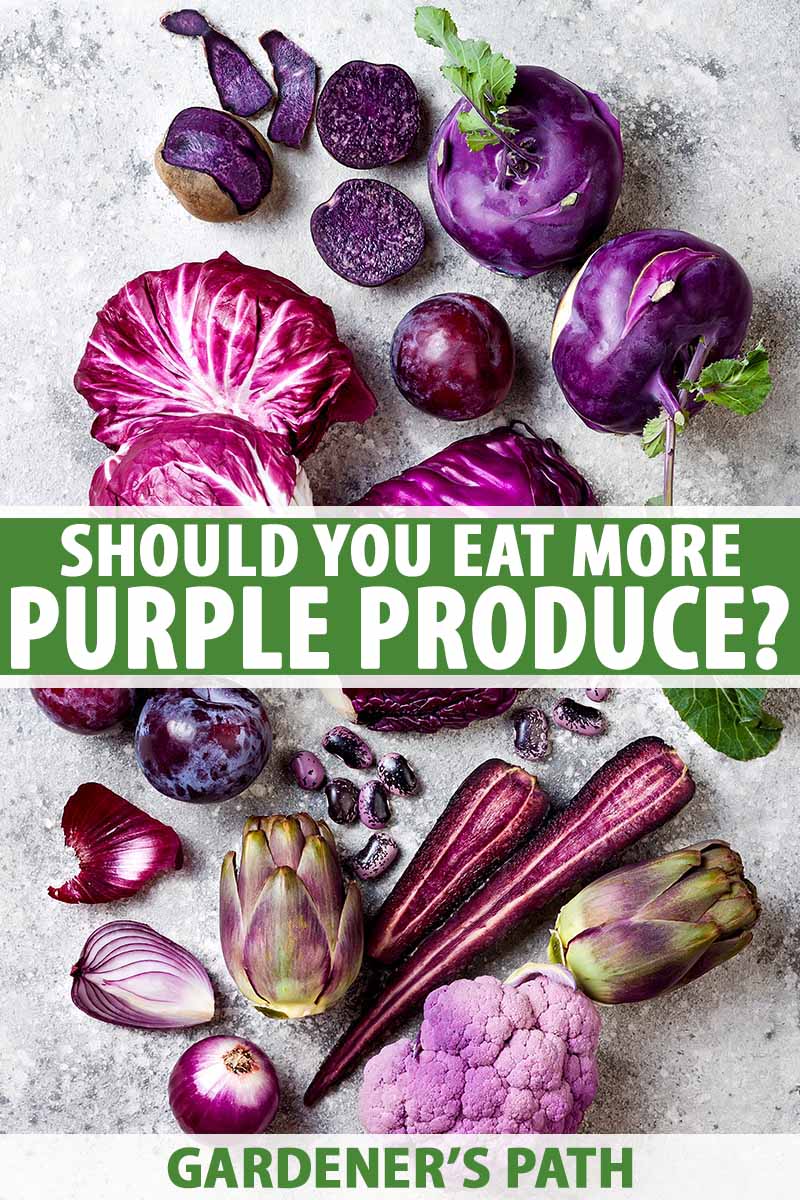
We link to vendors to help you find relevant products. If you buy from one of our links, we may earn a commission.
I can’t deny that purple is an amazingly beautiful color, but does its reputation hold true when it comes to our health? Let’s explore.
What You’ll Learn
What Makes Fruits and Vegetables Purple?
Fruits and vegetables get their colors from different phytochemicals. These compounds, made within the plant, also give them their taste and smell.
Anthocyanins are phytochemicals that give off a deep red, purple, or blue hue, and you’ll find these in many types of produce, including blueberries, cranberries, red cabbage, and plums. They also color many types of flowers.
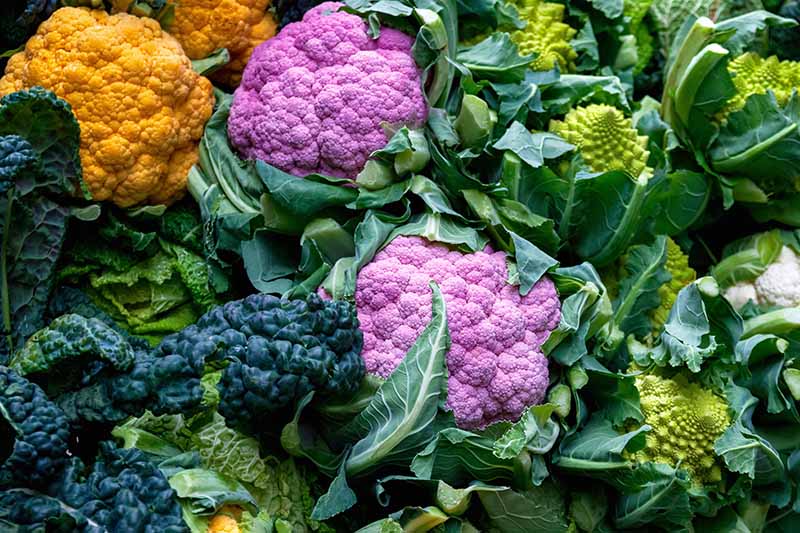
Other types of phytochemicals can also give produce rich colorful hues. Beets get their color from betalains. Red grapes are colored by anthocyanins, but also contain resveratrol, a phytochemical with its own distinctive advantages
Whoa – that was a lot of big words. The takeaway is this: plants make their own special chemicals that allow them to have unique colors and flavors.
Farmers can also use selective breeding to make certain foods colorful. You may have seen different colored carrots or cauliflower in grocery stores. While the standard commercially available cultivars don’t grow this way, special cultivars can provide additional phytochemical benefits.
Health Benefits of Eating Purple Foods
When we eat a variety of colorful plants, all of these phytochemicals act as antioxidants in our bodies. This is why foods with a high concentration of them (I’m looking at you, blueberries and pomegranates) often get a reputation for being superfoods.
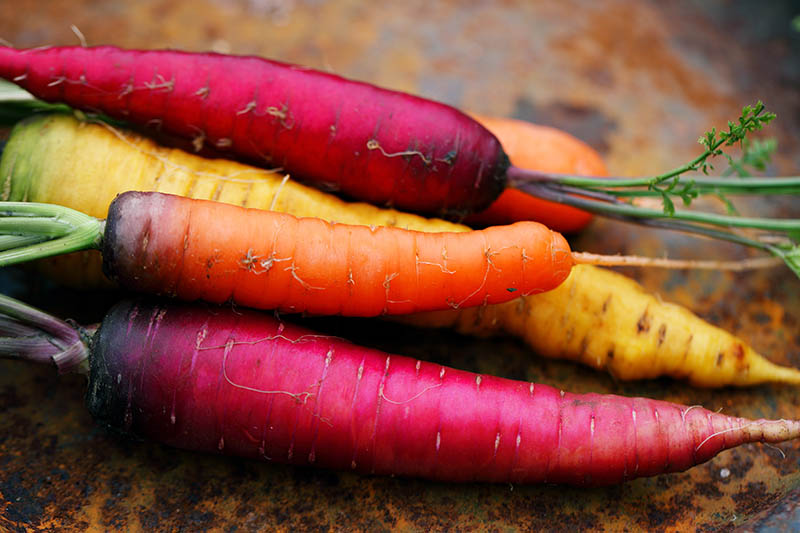
Antioxidants combat free radicals in our bodies. Free radicals can cause direct damage to our cells, so you can see why counteracting them is potentially beneficial. Antioxidants prevent the harmful effects of free radicals, and may work to protect our bodies against certain cancers and cardiovascular diseases.
Should You Eat More Purple Foods?
With all of these potent antioxidant benefits, it seems that it’s a good idea to include more colorful foods in your diet. Increasing our intake of these foods is definitely beneficial to overall health.
Let’s not get it twisted, though. While these foods offer remarkable advantages, so do other colors of fruits and vegetables!
Yes, you should eat more of them, but also more orange, red, yellow, green, and white plant-based foods. No single food is a superhero, coming to save your diet.
Purple Produce to Grow at Home
Colorful foods pack a powerful nutritional punch. Interested in growing some in your own garden? Check out this list of some of my favorite types of perfectly purple produce to get started.
1. Beets
These earthy gems are full of betalains and are wonderful to grow yourself. They are delicious roasted in the oven.
Check out our sister site, Foodal for an easy recipe and find seeds to grow your own from Burpee.
You can read more about how to grow beets here.
2. Blackberries
Easy to enjoy as a yogurt or salad topper, in a pie, or on their own, these berries also make a quality potted plant!
Live ‘Prime-Ark 45®’ blackberry plants are available from Burpee.
Read more about growing blackberries at home you can check out our guide for tips to start your own berry patch at home.
3. Black Currants
Sweet and tart, these fruits make a unique jam or jelly, and are also high in vitamin C.
‘Consort Black’ bare roots and live plants are available from Burpee.
5. Carrots
Who doesn’t love a crunchy carrot? Perfect for eating raw dipped in delicious hummus, or for roasting as a colorful side dish.
You can find seeds for ‘Cosmic Purple’ carrots available at Eden Brothers.
4. Eggplant
Amazing on its own, this vegetable is also able to soak up the flavors of whatever you cook it with.
Eggplant also makes an amazing addition to a chunky pasta sauce. Just remember to keep the peel on to maintain the anthocyanins!
Get started with these ‘Black Beauty’ seeds, available from True Leaf Market.
And to learn more, check out our guide to growing eggplant.
6. Grapes
Super sweet and tasty right off the vine, or use your harvest in a homemade jelly.
‘Concord’ is a classic variety with delicious flavor. Get your live plants from Burpee.
Learn how to plant and grow your own grapevines here.
7. Potatoes
Try these roasted with fresh homegrown herbs, add some colorful flare to a potato salad, or make homemade gnocchi.
‘Purple Majesty’ mini-tubers ready for planting are available from Burpee in packs of 10 if you’d like to to add these to your garden!
And don’t forget to check out our tips for growing your own potatoes at home.
8. Red Cabbage
Okay, so it’s often called red cabbage, but we all know it’s really purple. Great in slaws (like this one from Foodal) and it grows well even in colder climates.
Start your own cabbage patch with this fun cultivar – ‘Red Express’ seeds are available from Eden Brothers.
Read more about growing your own cabbage here.
9. Red Onion
See the above red/purple disclaimer. Flavorful and versatile, this is my favorite onion to use as a garnish!
‘Red Burgundy’ is a colorful cultivar that deserves a spot in your garden. Seeds are available from Eden Brothers.
And you can read all about growing your own bulb onions here.
Pump Up the Purple
If I haven’t made it clear already, purple foods have amazing perks! Beyond being delicious, they can help protect our bodies’ cells and provide many vitamins and minerals.
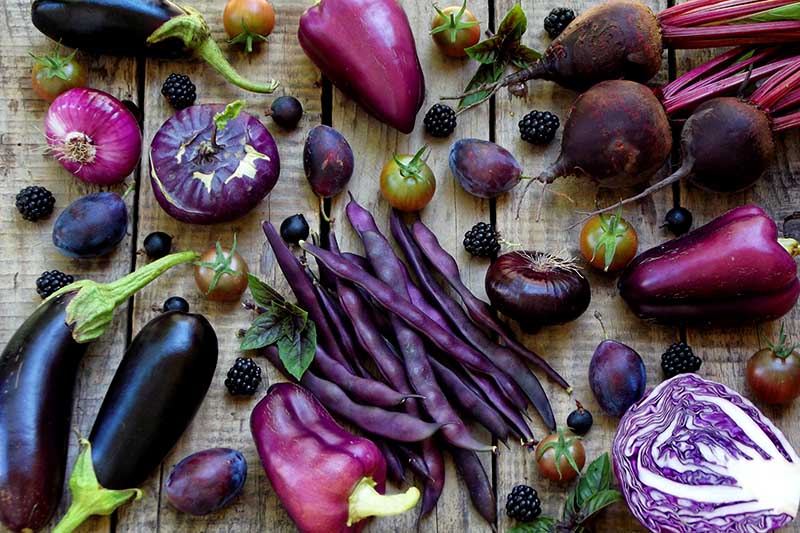
What are your favorite colorful foods to eat? Will you be including more in your diet now? Let me know in the comments below.
And for even more guidance to grow your own colorful fruits and vegetables at home, you’ll need these articles next:
© Ask the Experts, LLC. ALL RIGHTS RESERVED. See our TOS for more details. Product photos via Burpee, Eden Brothers, and True Leaf Market. Uncredited photos: Shutterstock.
The contents of this article have been reviewed and verified by a registered dietitian for informational purposes only. This article should not be construed as personalized or professional medical advice. Gardener’s Path and Ask the Experts, LLC assume no liability for the use or misuse of the material presented above. Always consult with a medical professional before changing your diet, or using supplements or manufactured or natural medications.
